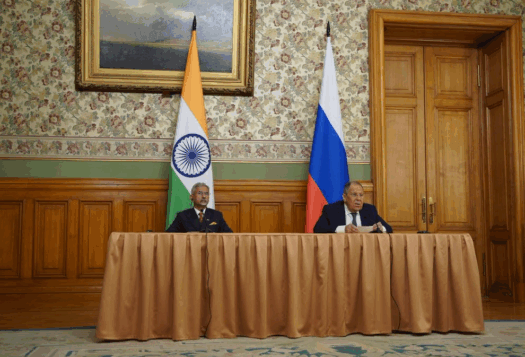
In July, the United States reduced tariffs on Pakistani exports from nearly 29 percent to 19 percent and agreed to ship U.S. crude oil to Pakistan for the first time in history. Just days later, it imposed an additional 25 percent tariff on a broad range of Indian goods, raising the total duty to 50 percent for several key product categories. These decisions give Pakistan an unusual economic opening in a region where it is rarely ahead of the curve.
Pakistan now has the chance to win short-term market share, improve energy security, and reposition itself as a useful player in the U.S. commercial orbit. But timing matters. Unless Islamabad responds with urgency and coordination, this window could close before it delivers any durable outcomes.
Strategic Timing and Regional Disruption
The U.S. tariff increases on Indian exports are not just punitive—they are political. They reflect Washington’s frustration with New Delhi’s continued oil trade with Russia and broader disagreements over trade reciprocity. In this context, Pakistan’s recent alignment with U.S. commercial goals, on both energy and market access, marks a notable shift.
Pakistan now has the chance to win short-term market share, improve energy security, and reposition itself as a useful player in the U.S. commercial orbit.
Pakistani textiles and apparel are especially poised to benefit. In the first eight months of FY 2025, Pakistani textile exports rose approximately 9.3 percent year-on-year, driven largely by knitwear, bedwear, and apparel categories. These products comprised nearly 55 percent of the country’s total export earnings during that period. With Indian supply chains disrupted and Bangladesh under labor scrutiny, Pakistan has a rare opportunity to win buyers’ confidence, but success will depend on execution. The disruptions in India and Bangladesh affect high-volume categories such as ready-made garments, home textiles, and finished apparel, segments where price sensitivity drives sourcing decisions. Large U.S. retailers and wholesalers often hedge against supply chain risks by diversifying across multiple countries. If Pakistan can deliver at scale consistently, it could shift from being a fallback supplier to a primary one.
Yet Pakistan’s advantage is not guaranteed. Southeast Asian economies like Vietnam, Indonesia, and Cambodia continue to offer stiff competition through more efficient logistics, stronger compliance regimes, and preferential access to Western markets via trade agreements like the Comprehensive and Progressive Agreement for Trans-Pacific Partnership (CPTPP). Pakistan also struggles on metrics like lead time, customs digitization, and energy reliability, which are generally not as much a concern in Southeast Asia. If Islamabad fails to match these standards, short-term gains would likely erode quickly.
Energy Cooperation: A Test of Readiness
Pakistan’s agreement to import U.S. crude, set to arrive via Houston later this year, marks the start of an energy partnership with Washington that could invite further investment and deepen bilateral engagement. This shipment is crucial because it will test whether local refineries can efficiently process lighter crude blends, a capability that is vital for sustaining future volumes. Unlike the heavier grades typically sourced from the Gulf, U.S. crude often contains lighter fractions that require different refining configurations. Successfully processing these blends requires technical compatibility and infrastructure upgrades, which some of Pakistan’s refineries may currently lack. If managed well, this could strengthen Pakistan’s energy diversification and reduce its long-term reliance on Gulf-based suppliers, which currently dominate the country’s fuel contracts.
Domestic Exploration: A Separate Frontier
Parallel to increasing its crude imports from the United States, Islamabad has sought to revive domestic energy exploration, especially in less-tapped provinces like Sindh and Balochistan. The recent U.S.-Pakistan deal explicitly includes collaboration on developing Pakistan’s oil reserves; though precise locations were not detailed, officials noted reserves in Balochistan, Sindh, Punjab, and Khyber Pakhtunkhwa. This suggests potential for joint ventures or U.S. technical engagement separate from the crude import agreement.
However, Pakistan’s resource history is complex. Proven reserves remain modest and exploration success has been limited—though technical estimates are encouraging, proven output is low. Past efforts to unlock hydrocarbon potential in the country have faltered due to unclear licensing processes, security risks in Balochistan, and weak community buy-in. What is needed now to capitalize on this potential is a governance framework that emphasizes transparency, inclusivity, and consistent rules of engagement for investors.

Moving Beyond Announcements
Policy alignment and trade deals can generate headlines, but they do not guarantee economic outcomes. With the new U.S. tariffs on Indian goods taking effect shortly, sourcing decisions are already in motion. Pakistan must move quickly to ensure its exporters are in a position to respond.
That starts with resolving operational bottlenecks that have long undermined credibility. Many exporters, especially outside Karachi and Lahore, lack access to financing, export certifications, and efficient port clearance. These gaps persist despite multiple institutional mandates, with exporters navigating over 40 agencies for a single shipment. Agencies such as the Trade Development Authority of Pakistan (TDAP), Pakistan Single Window (PSW), and the State Bank must coordinate on bridging these gaps through financial tools like credit guarantees, customs streamlining, and compliance support.
The PSW, a digital trade facilitation platform that connects over 70 regulatory bodies through a single portal, can be a game-changer. It should be empowered to pilot digital pre-clearance and certification for select textile clusters, reducing paperwork and accelerating time-sensitive shipments.
Equally critical is external signaling. Pakistan’s commercial attachés in key U.S. markets like Houston and New York should proactively engage sourcing managers at U.S. firms to present a unified message: Pakistan is not only cost-competitive, but logistically and commercially prepared to absorb redirected demand. This is especially urgent for high-volume categories where American retailers are seeking near-term alternatives.
Yet operational fixes alone are not enough. Delivering on this moment, without overpromising or reversals, will send a strong signal to American buyers, multilateral lenders, and skeptical investors. The country’s energy regulators should also ensure the U.S. crude import deal becomes a reliable, scalable trade pathway reflecting Pakistan’s technical and operational readiness.
To ensure this moment translates into long-term market credibility, Pakistan should establish a temporary interagency task force under the Planning Commission. This body would bring together representatives from TDAP, the PSW, the Ministry of Commerce, the Ministry of Energy, and commercial sections of embassies abroad. Its mandate would be time-bound, structured, 90-day charter with clear performance benchmarks: weekly customs clearance reporting, minimum targets for exporter onboarding in priority sectors, and a documented record of U.S. buyer engagements facilitated by Pakistani missions.
To ensure this moment translates into long-term market credibility, Pakistan should establish a temporary interagency task force under the Planning Commission.
The task force would have to function not as a passive coordination body, but actively resolve implementation gaps and drive accountability across institutions. The PSW pilot could be treated as an early priority, especially for reducing documentation burdens that routinely delay time-sensitive orders.
Pakistan’s commercial outreach would also have to evolve. Instead of broad trade promotion, Pakistan’s efforts should segment buyer engagement by vertical—home textiles, knitwear, leather goods—aligned with tariff savings, compliance benchmarks, and lead time guarantees. This level of precision is essential not only to win new contracts but to signal to U.S. buyers that Pakistan can deliver with reliability, not just low cost.
Delivering on the Opening
Pakistan has been presented with a rare structural advantage in a crowded and competitive regional export landscape. But trade openings do not become inflection points on their own. What follows now will determine whether this moment becomes a case study in delivery, or just another footnote of a missed opportunity. If Pakistan can meet this test with discipline, coordination, and urgency, it could not only gain market share but also reset long-standing doubts about its capacity to compete at global scale.
Views expressed are the author’s own and do not necessarily reflect the positions of South Asian Voices, the Stimson Center, or our supporters.
Also Read: Not a Reset, But a Pragmatic Refashioning of U.S.-Pakistan Ties
***
Image 1: Jawadqada via Wikimedia Commons
Image 2: katorisi via Wikimedia Commons


